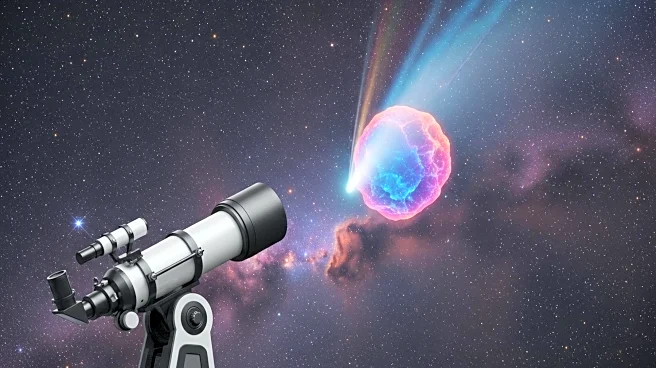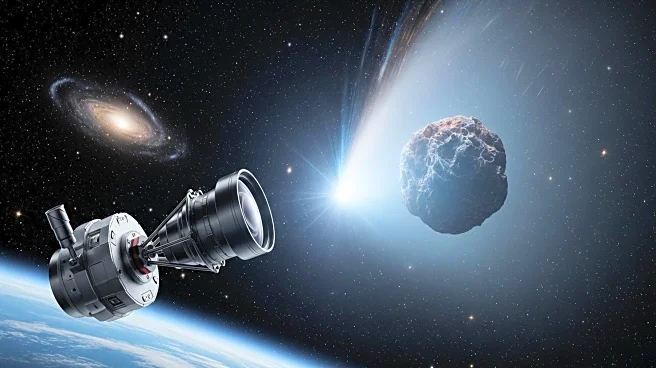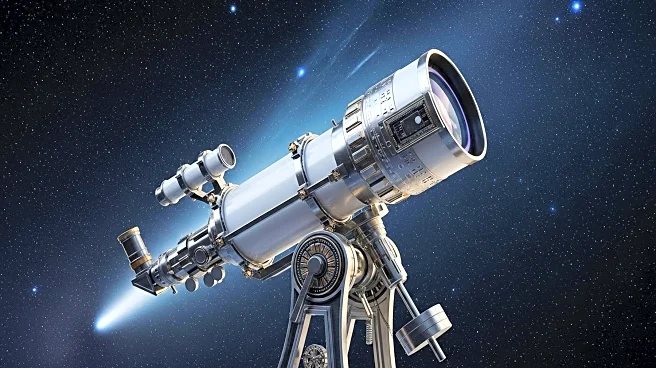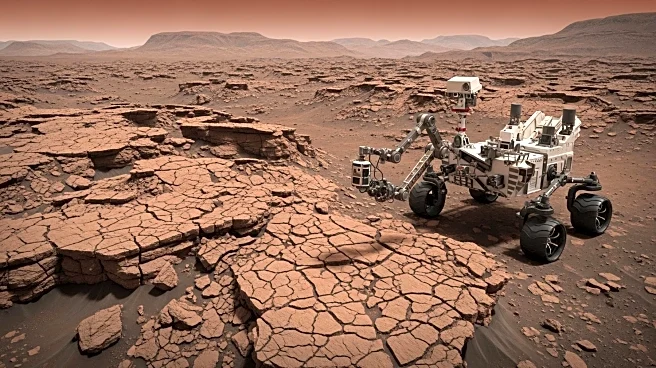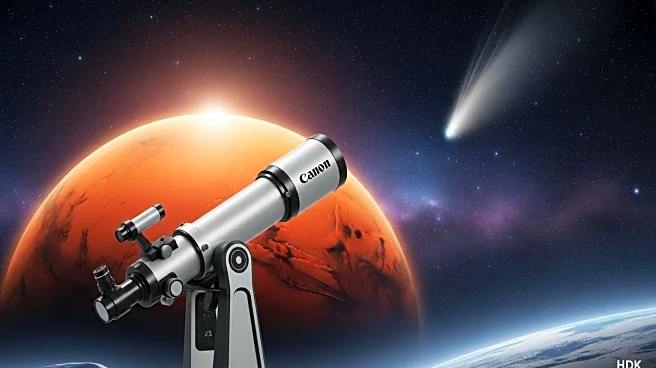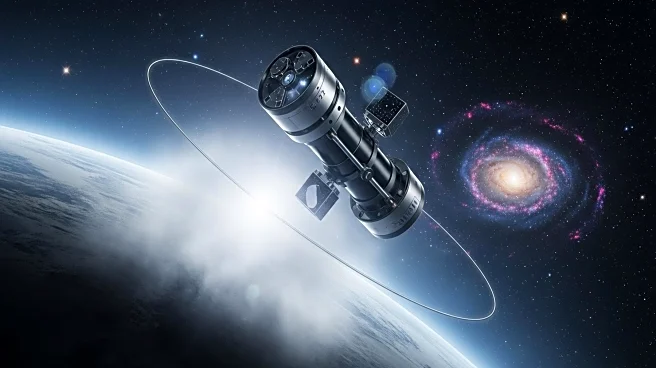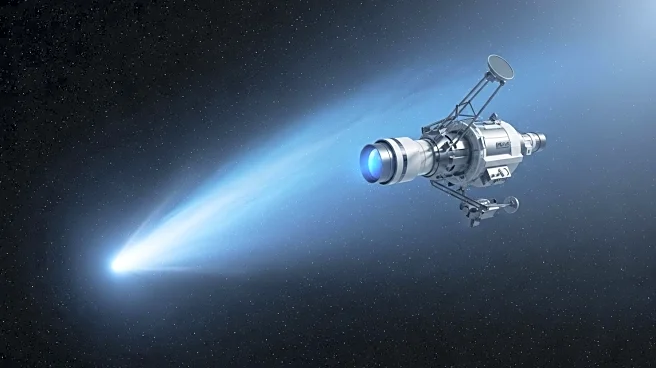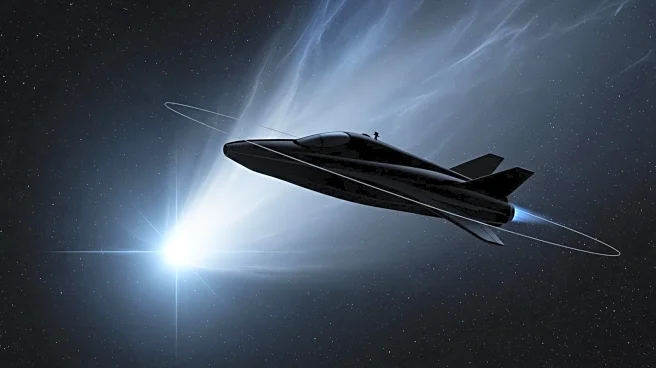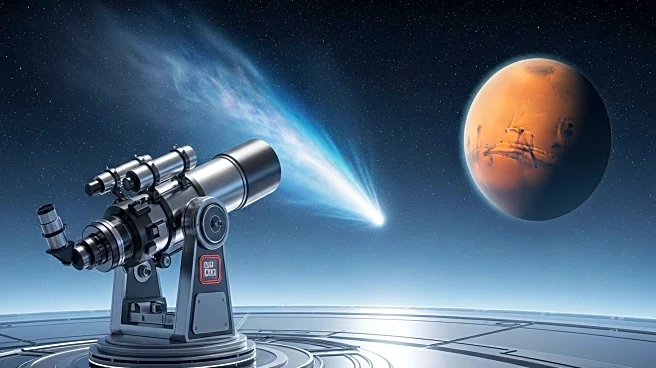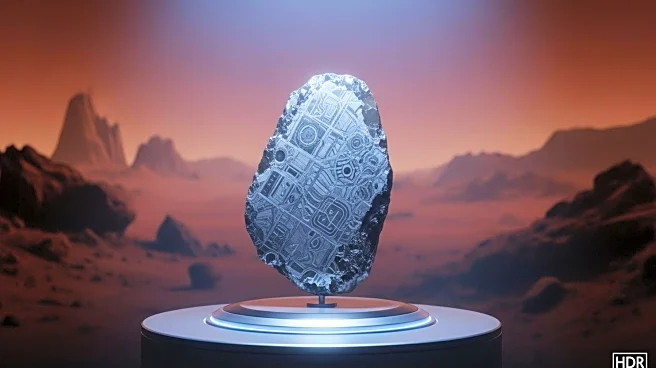What's Happening?
NASA's Hubble, SPHEREx, JWST, and TESS telescopes have observed the interstellar comet 3I/ATLAS, revealing a unique composition with a high proportion of carbon dioxide in its coma compared to water. This discovery challenges existing theories about comet formation and suggests that 3I/ATLAS may have formed in an environment with higher radiation levels or near the CO2 ice line in its parent protoplanetary disk. The comet was first detected on July 1, 2025, and is currently being studied as it approaches its closest point to the Sun, known as perihelion, on October 29.
Why It's Important?
The findings from the telescopes provide new insights into the composition and behavior of interstellar comets, which differ from those formed within our solar system. Understanding the makeup of 3I/ATLAS could offer clues about the conditions in other star systems and the processes that lead to comet formation. This research has implications for planetary science and could influence future studies on the origins of comets and the environments in which they form.
What's Next?
As 3I/ATLAS approaches perihelion, scientists expect increased activity, including the sublimation of water ice, which could lead to a more pronounced coma and tail. Observations from Mars orbiters and other spacecraft may provide additional data on the comet's composition and behavior. Researchers are eager to continue studying 3I/ATLAS to gain further insights into interstellar cometary phenomena.
